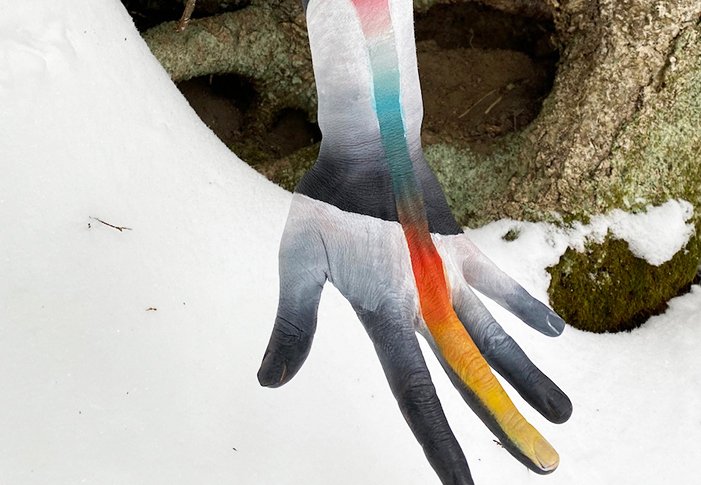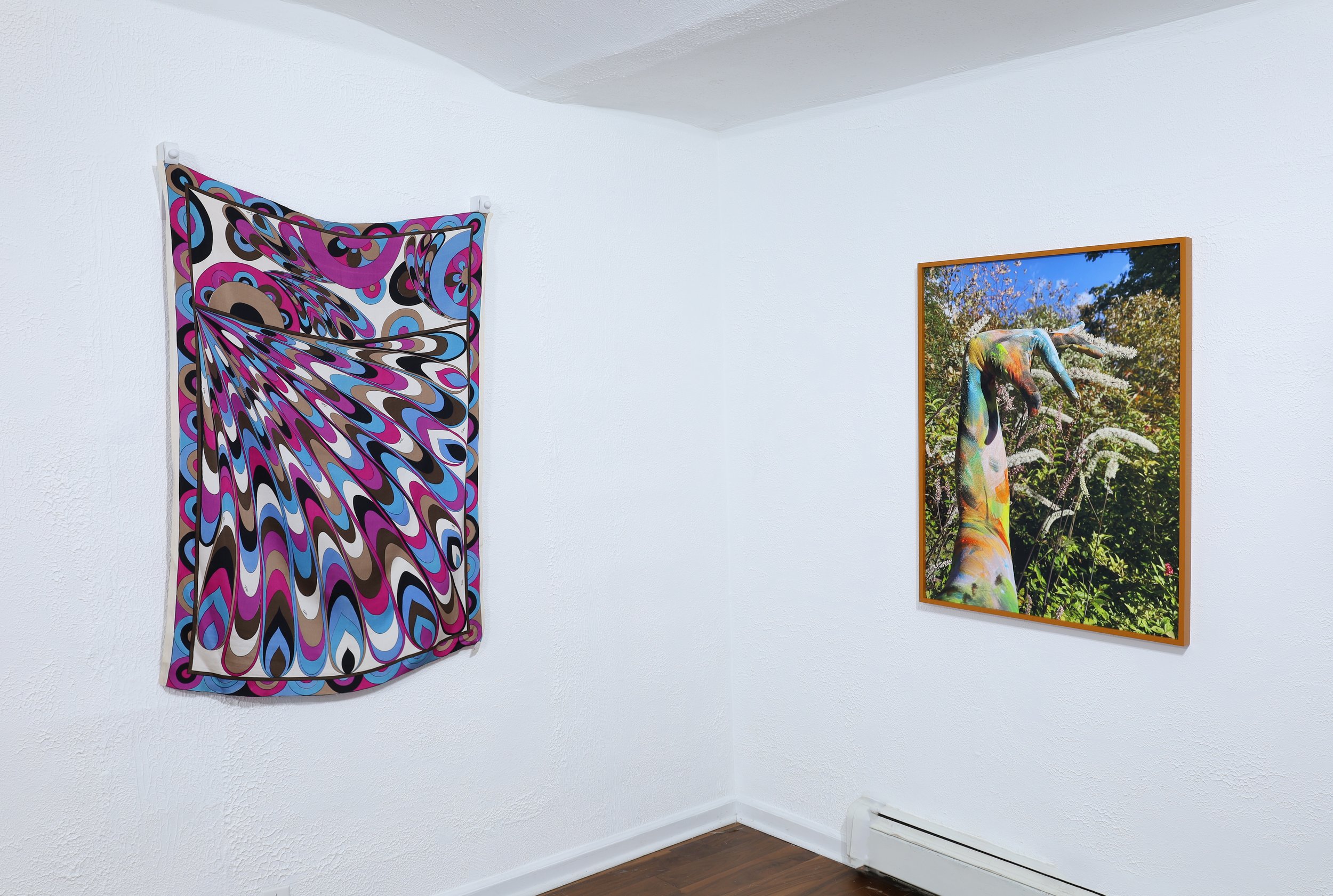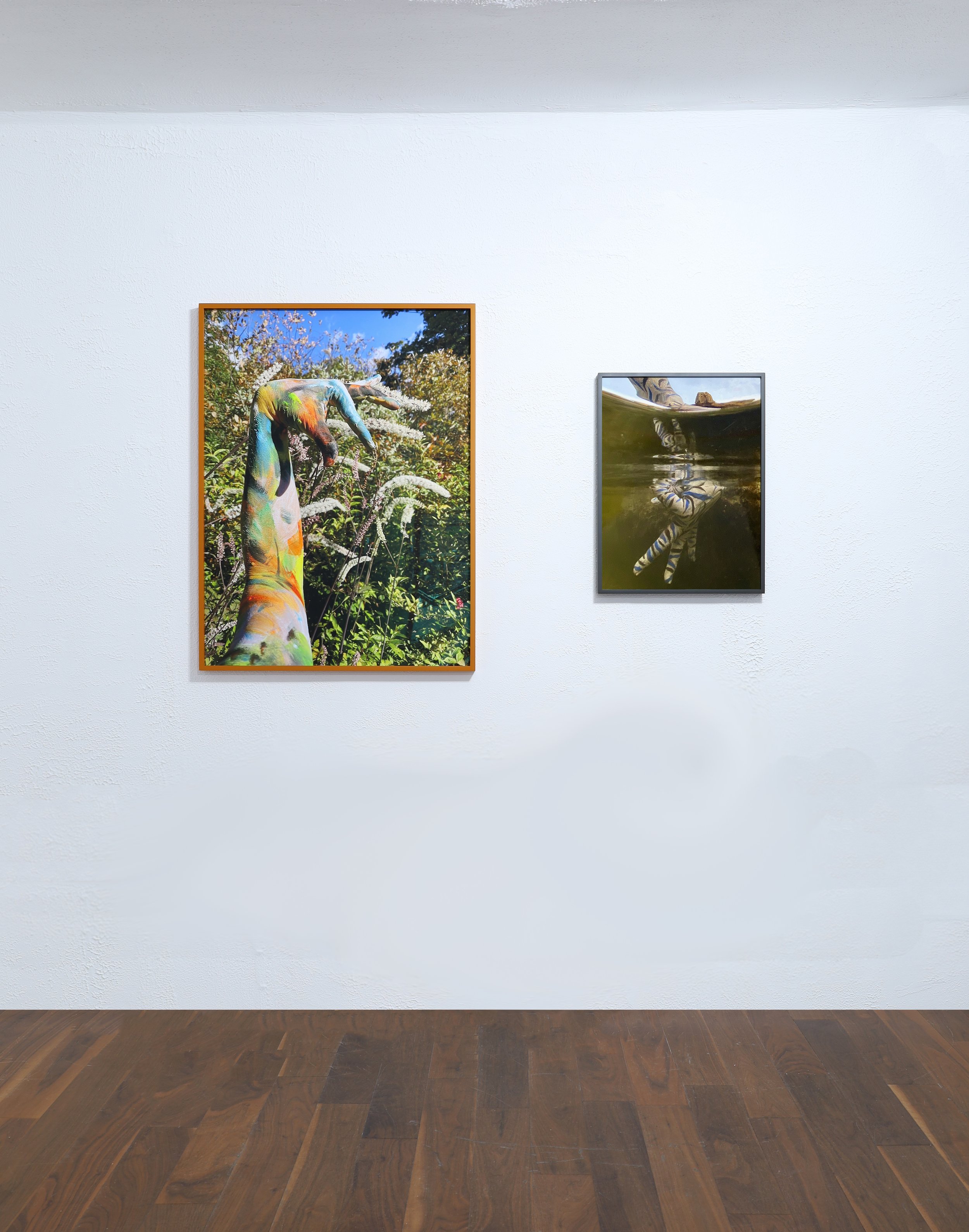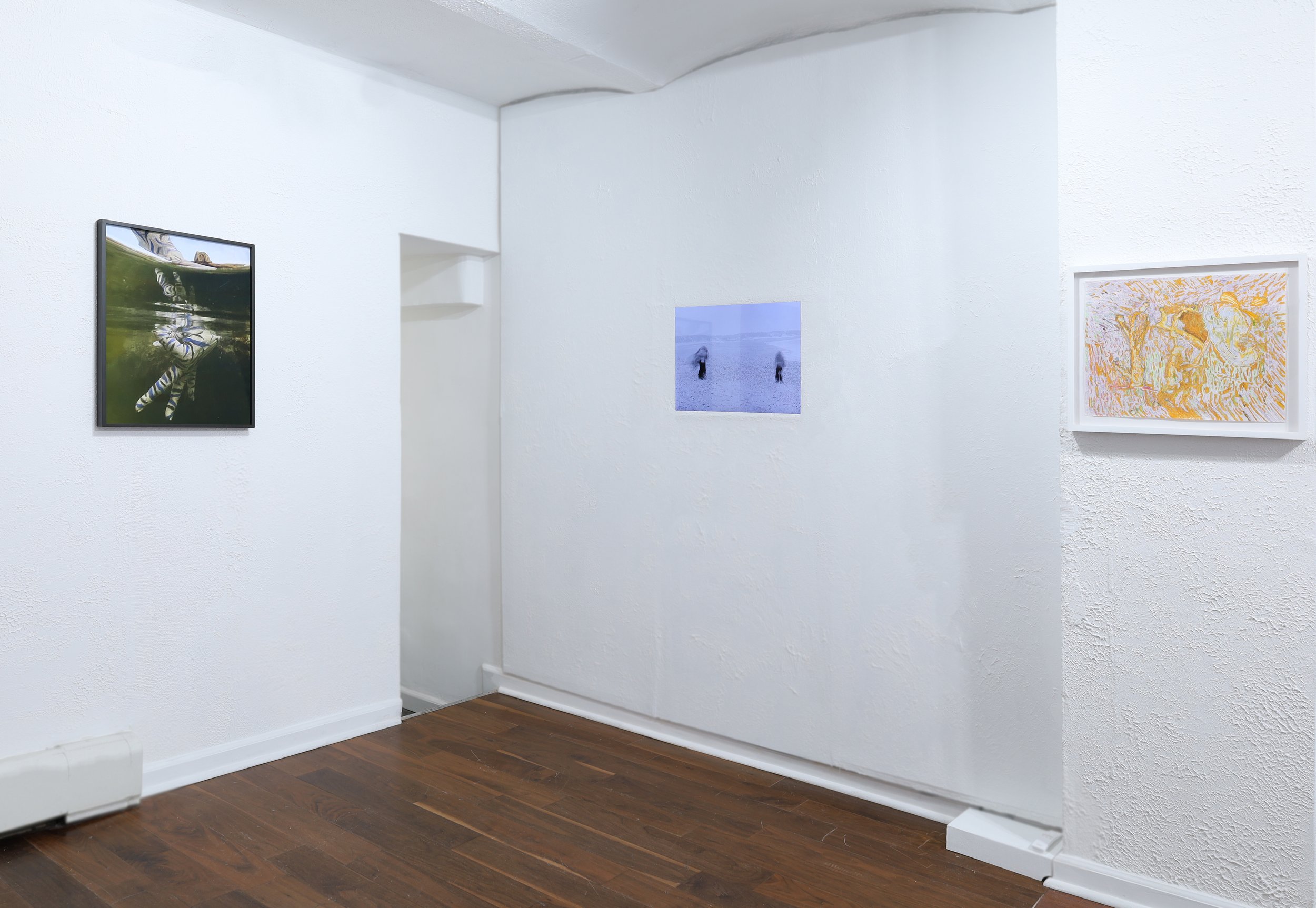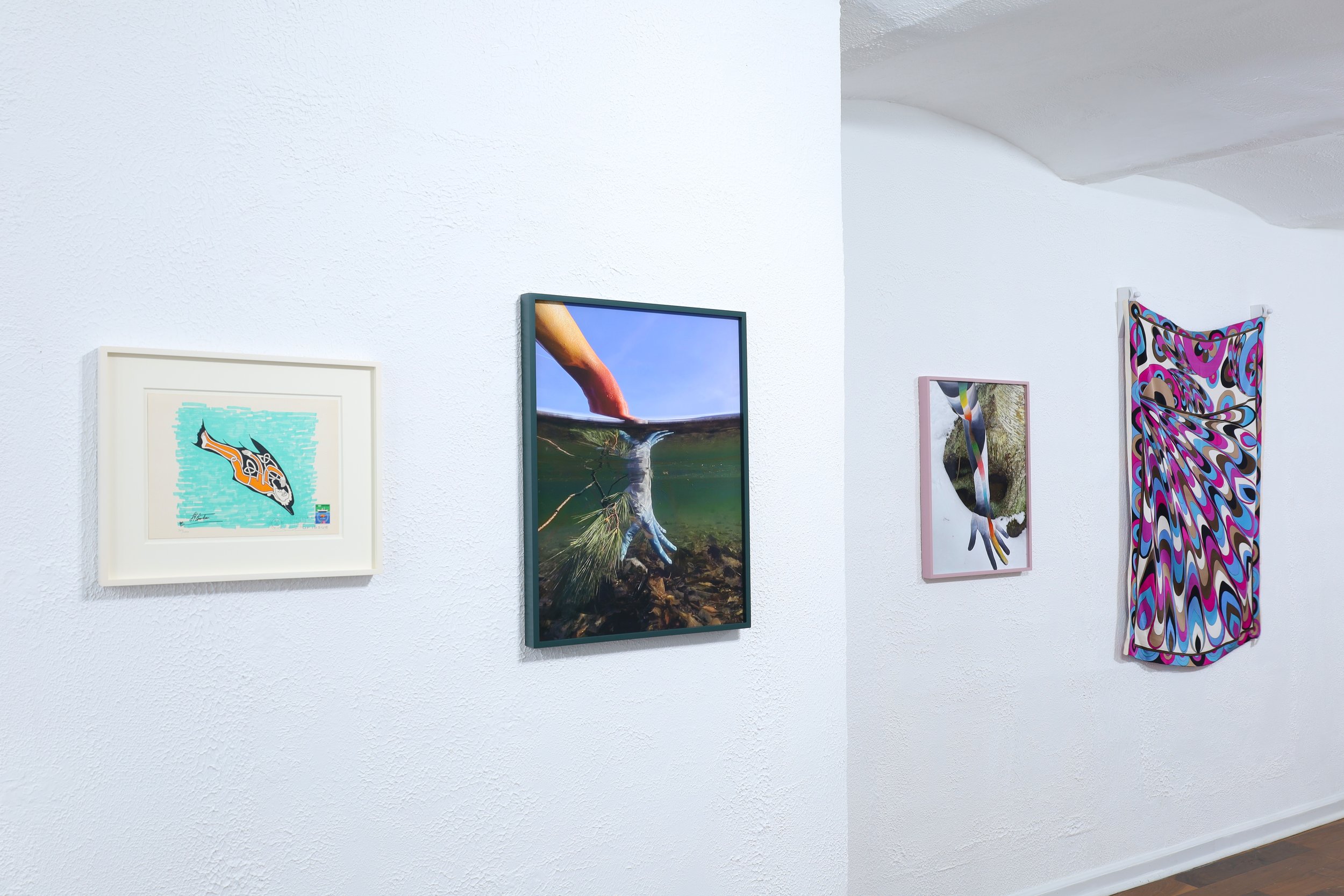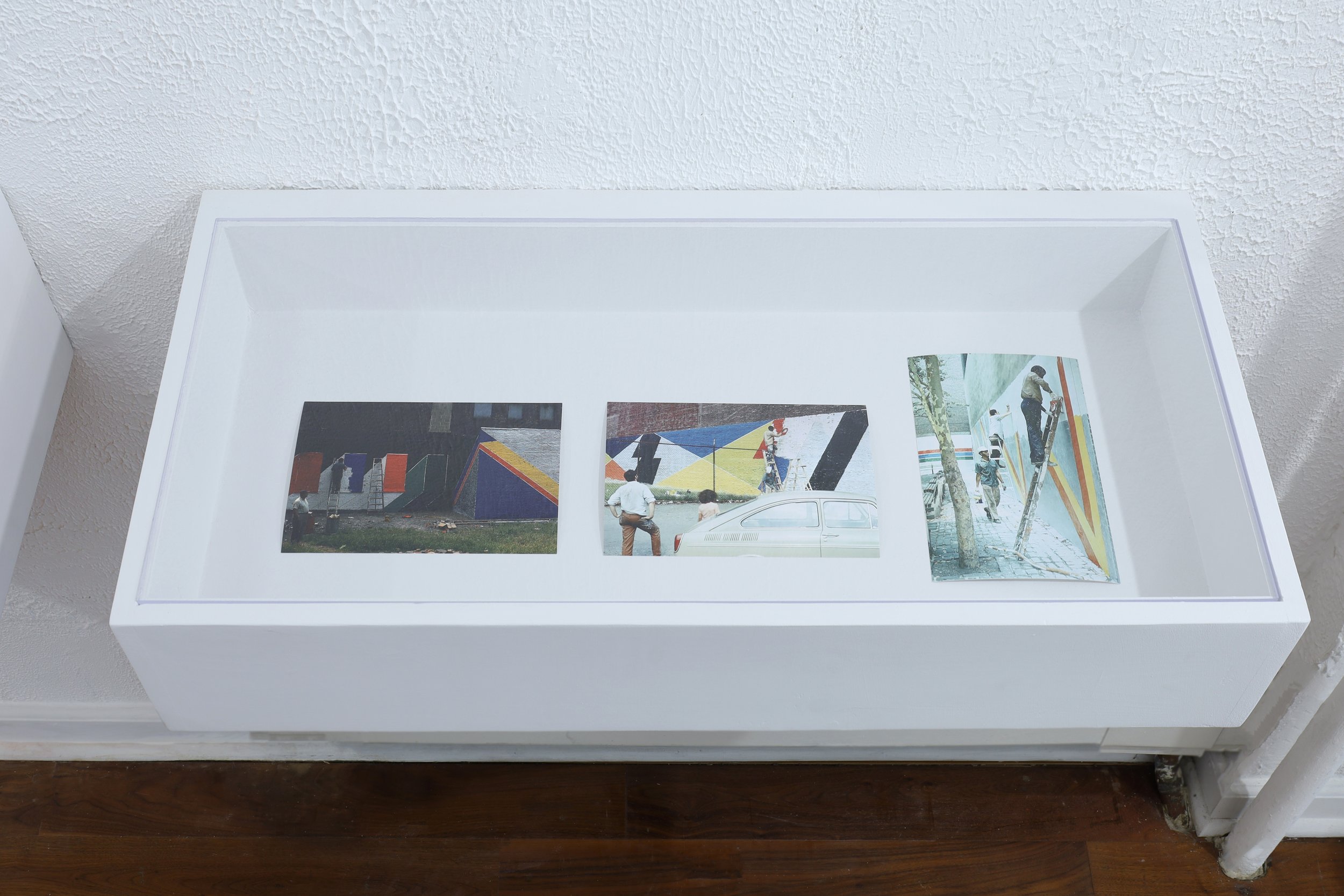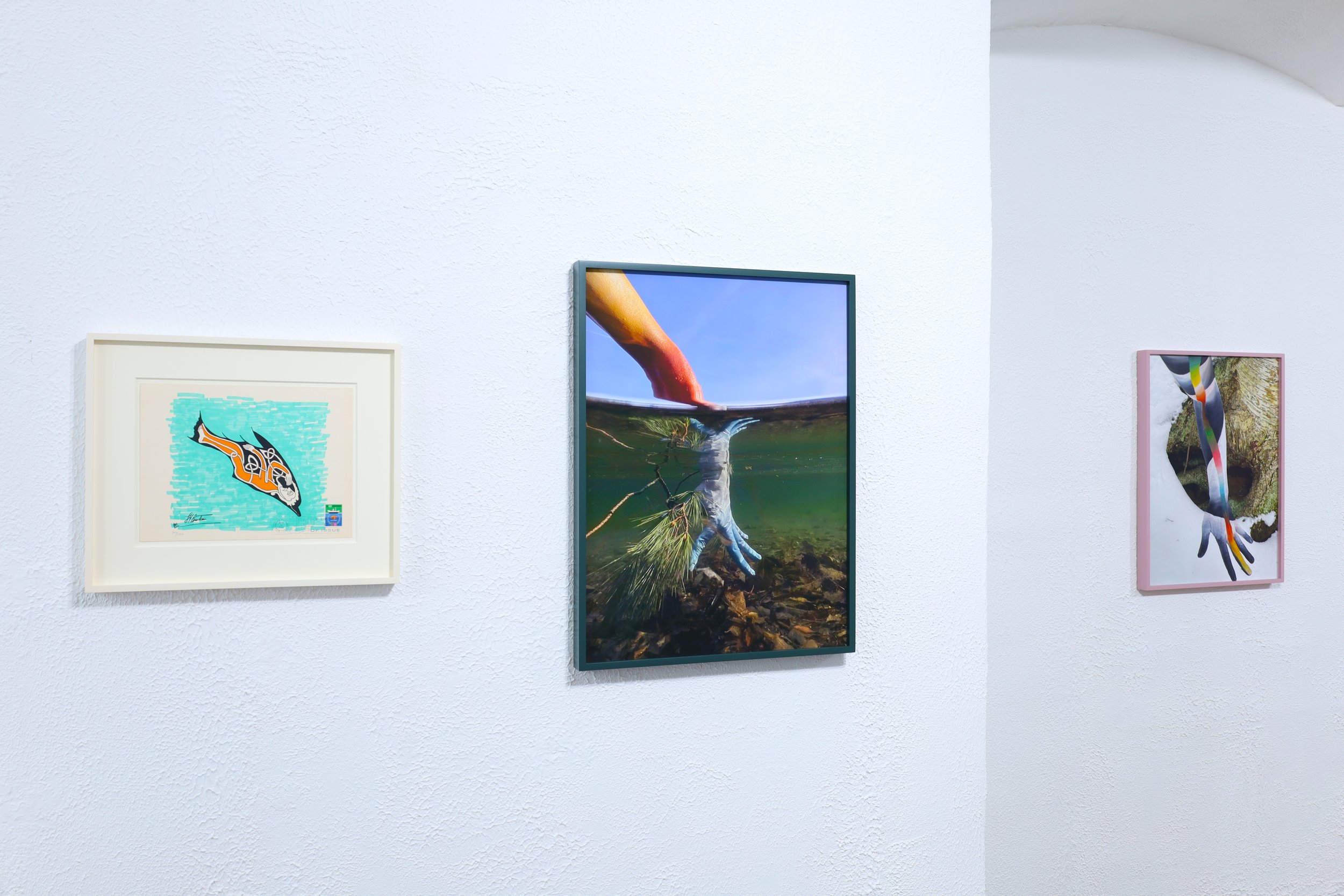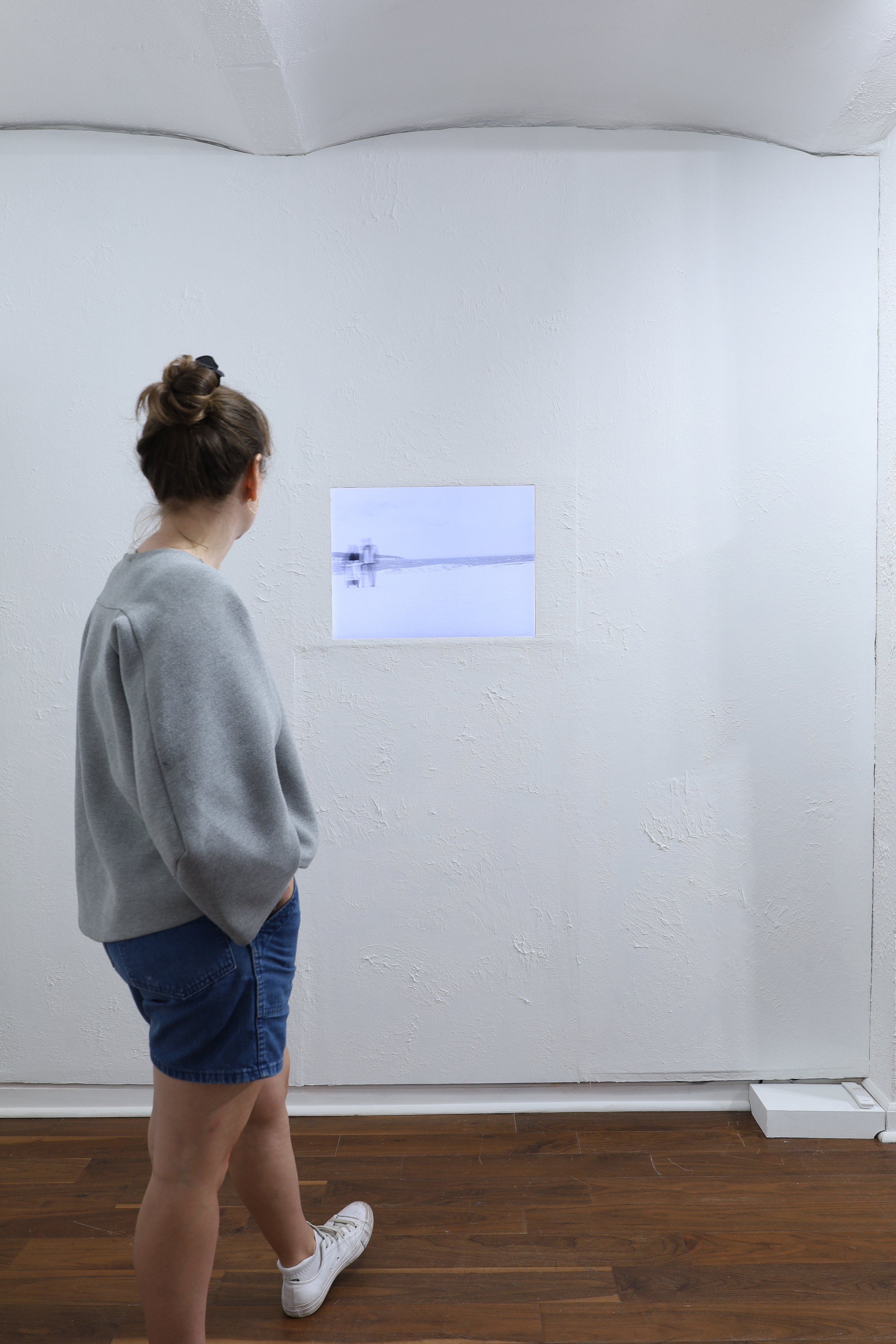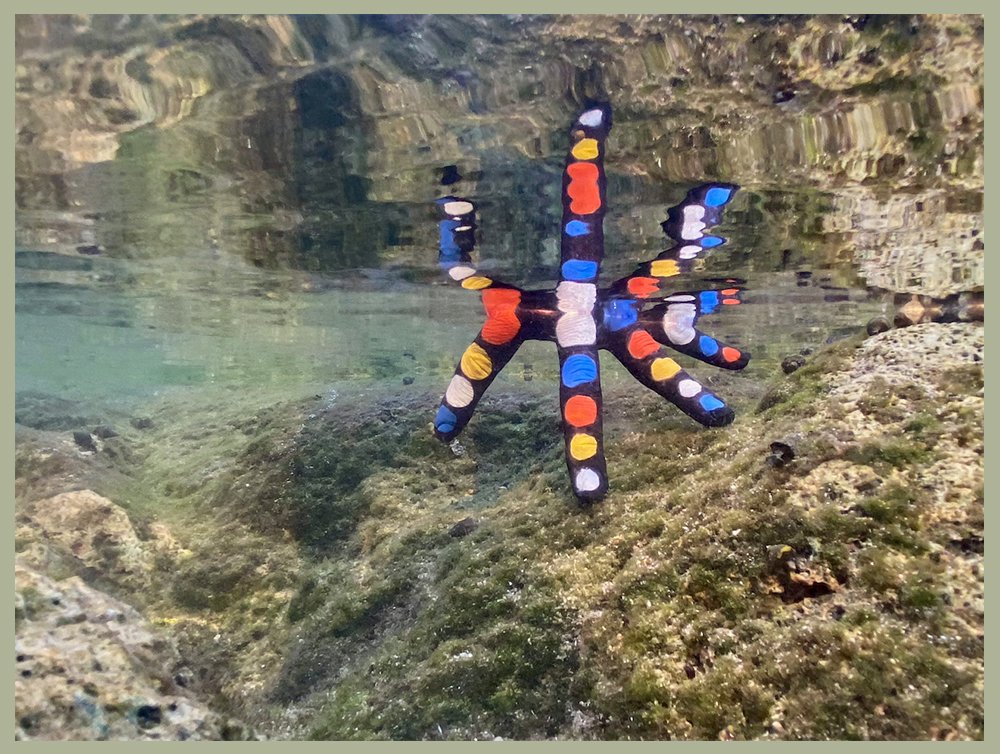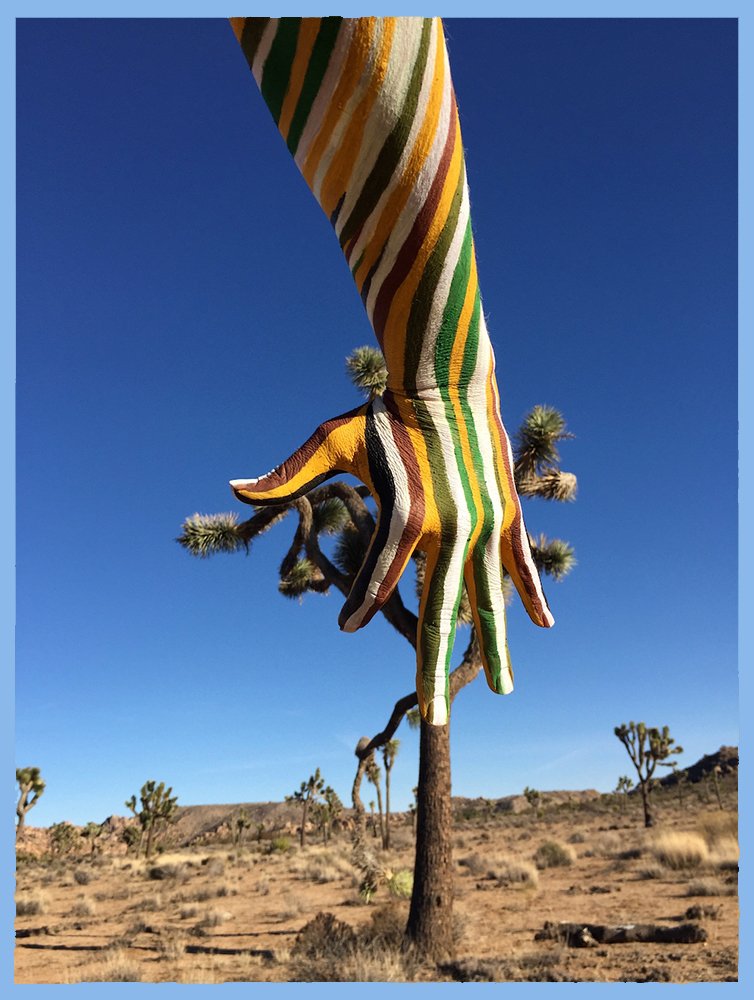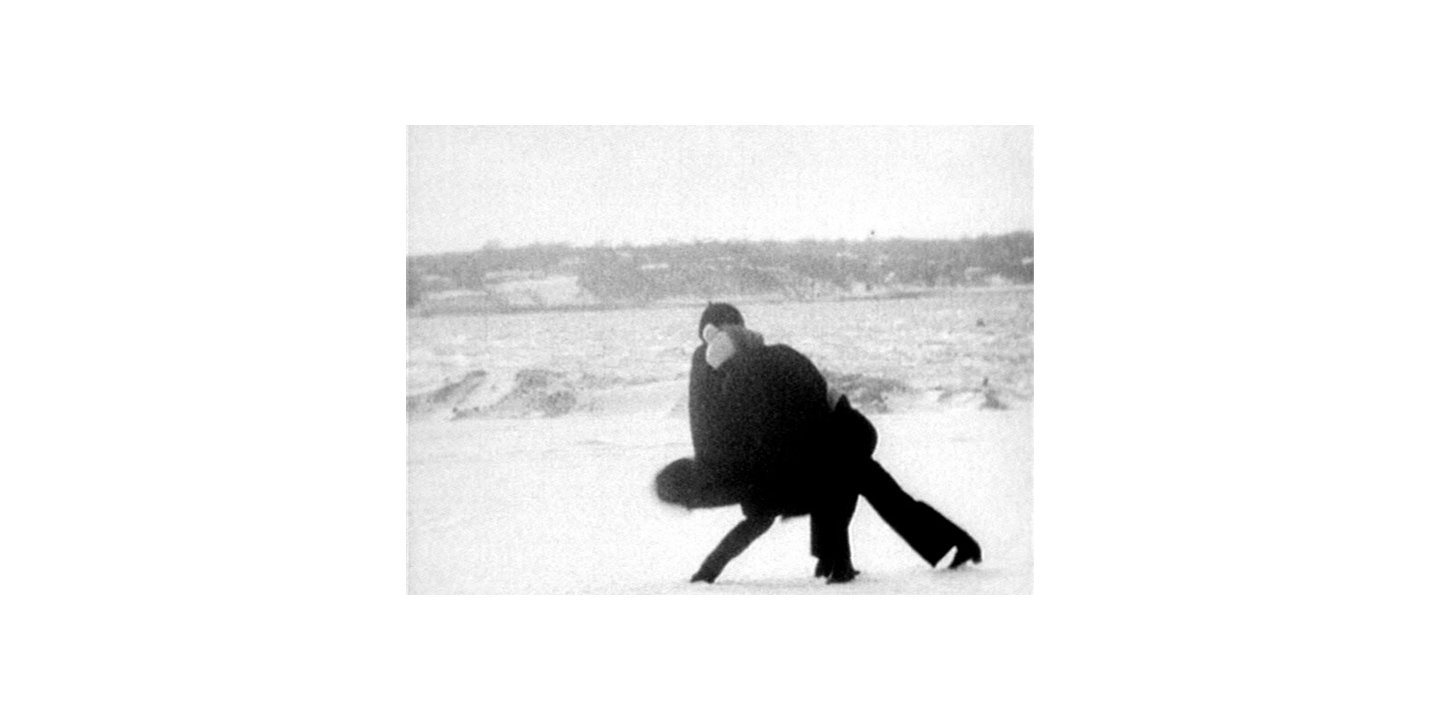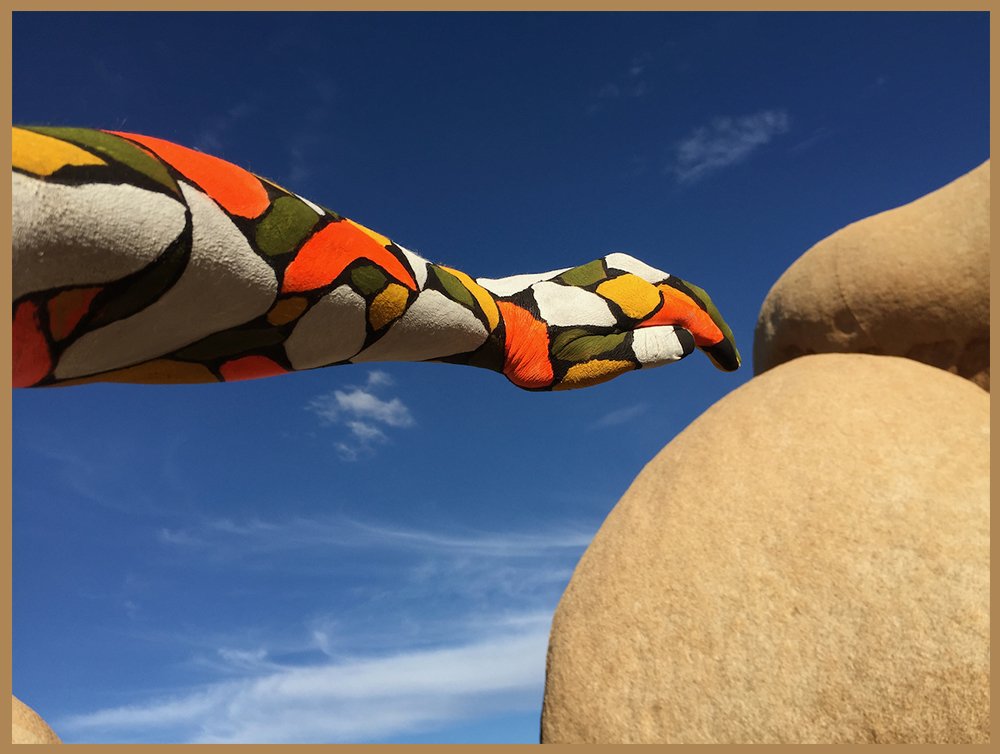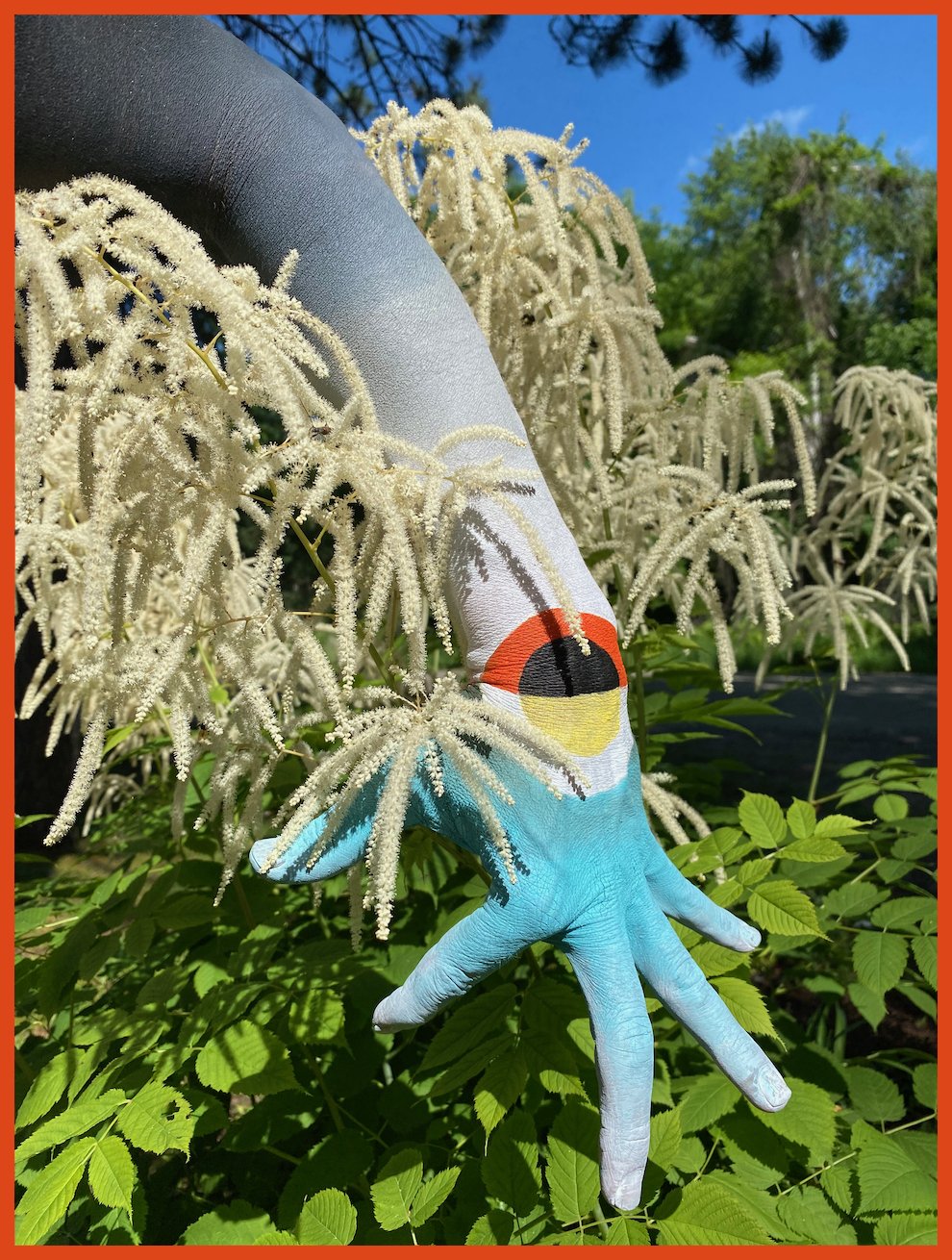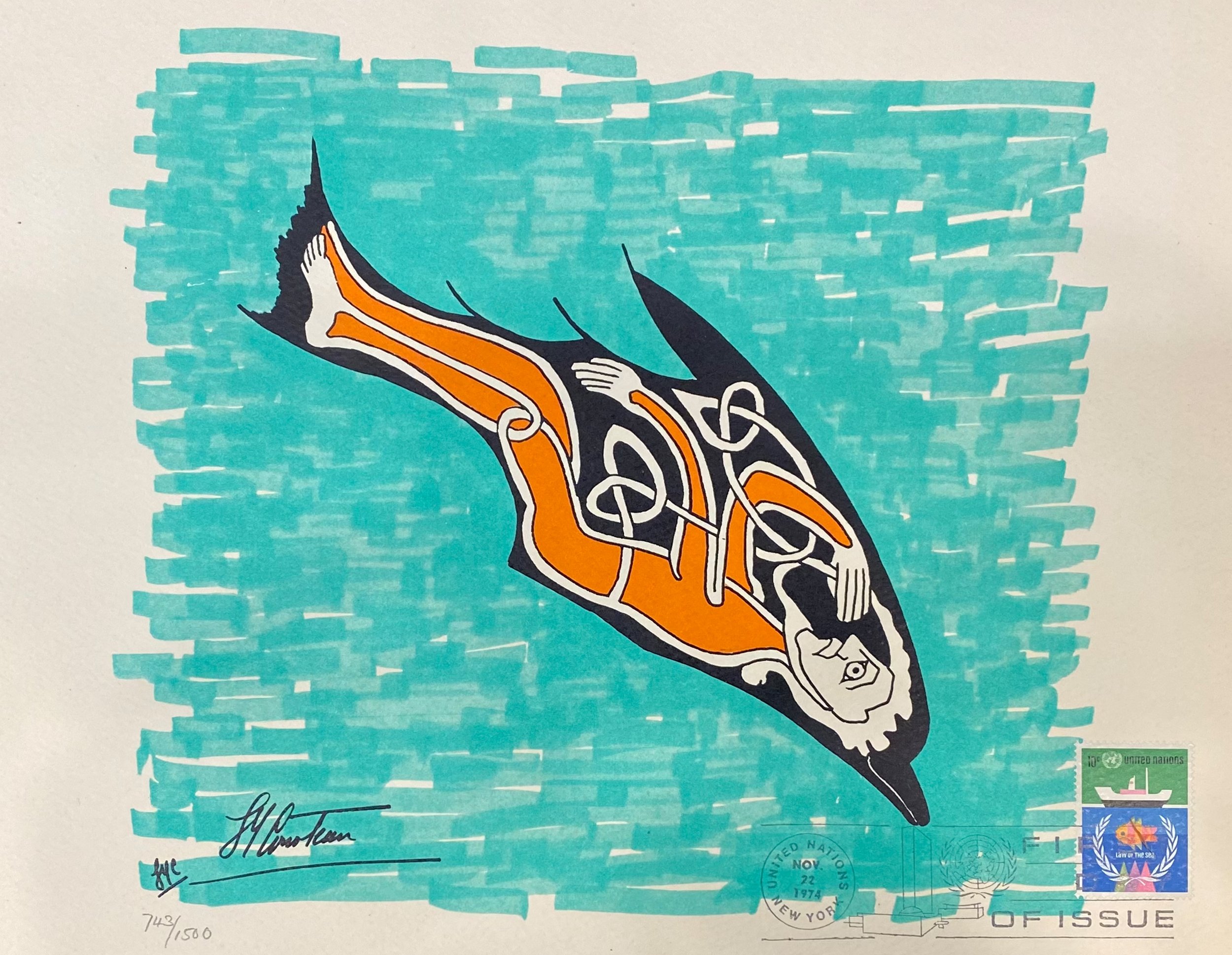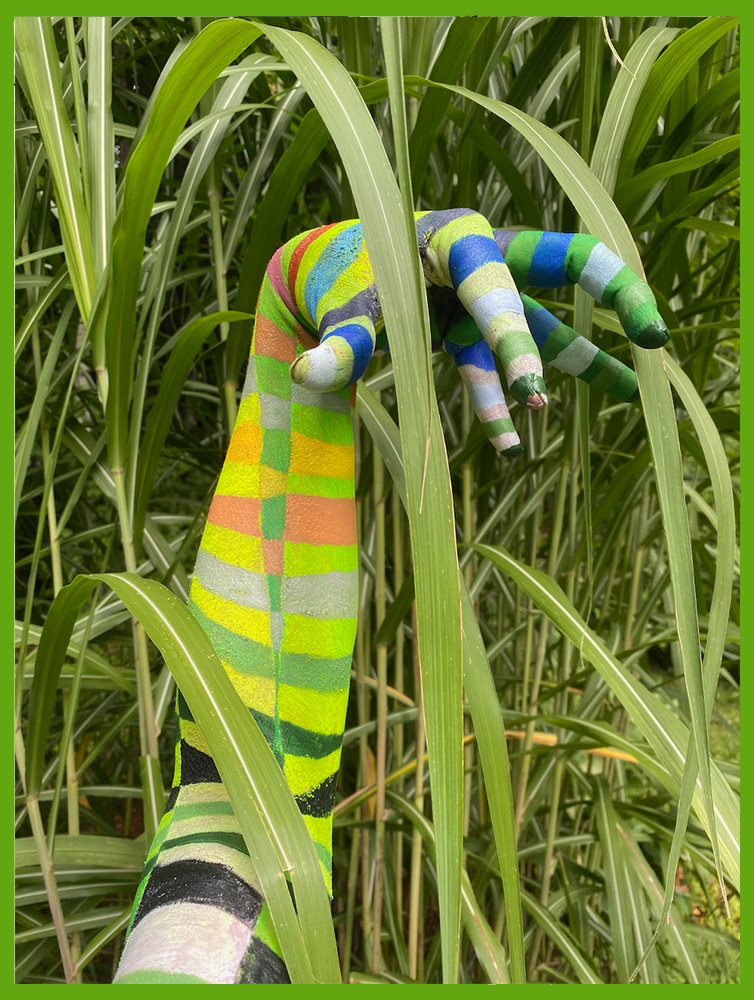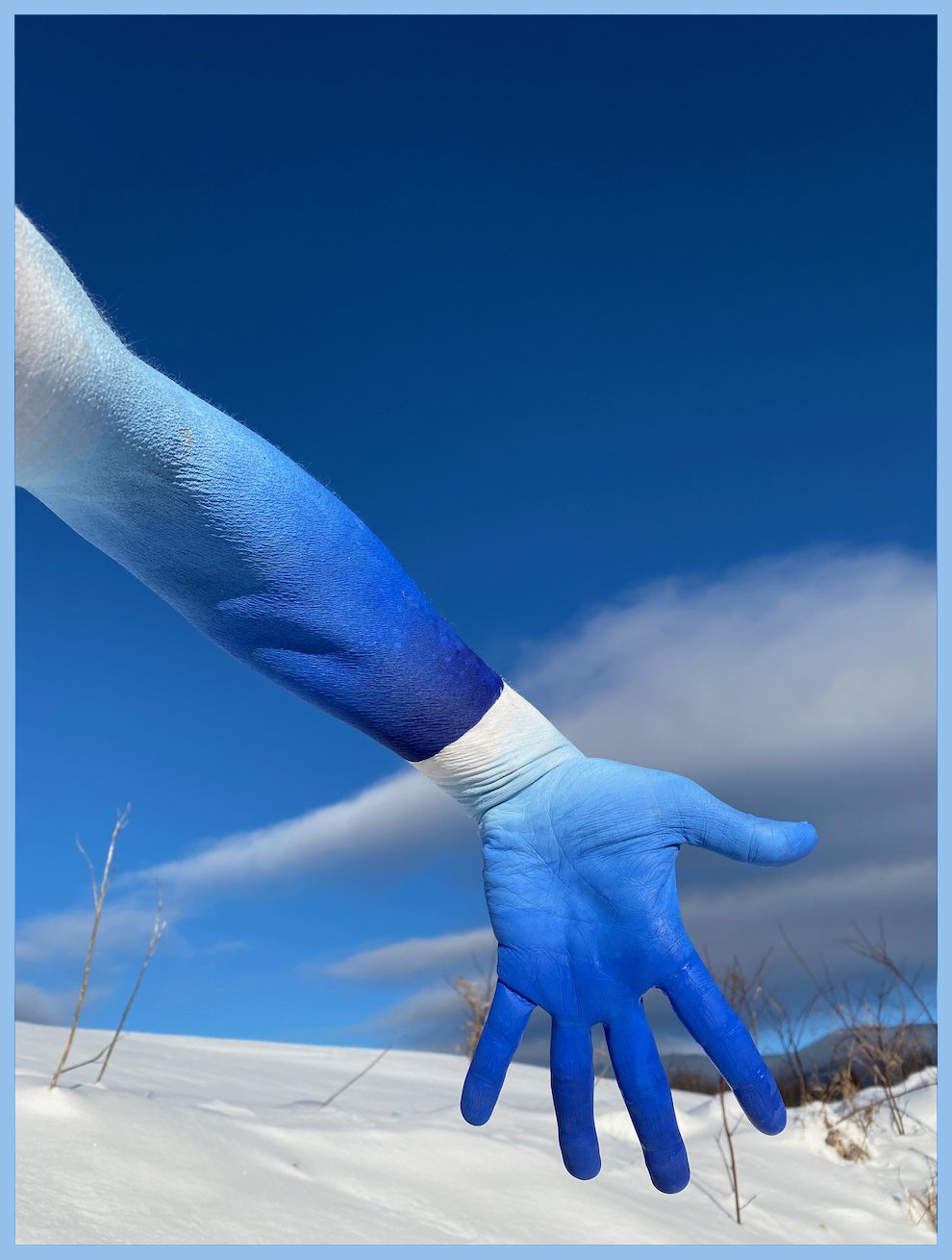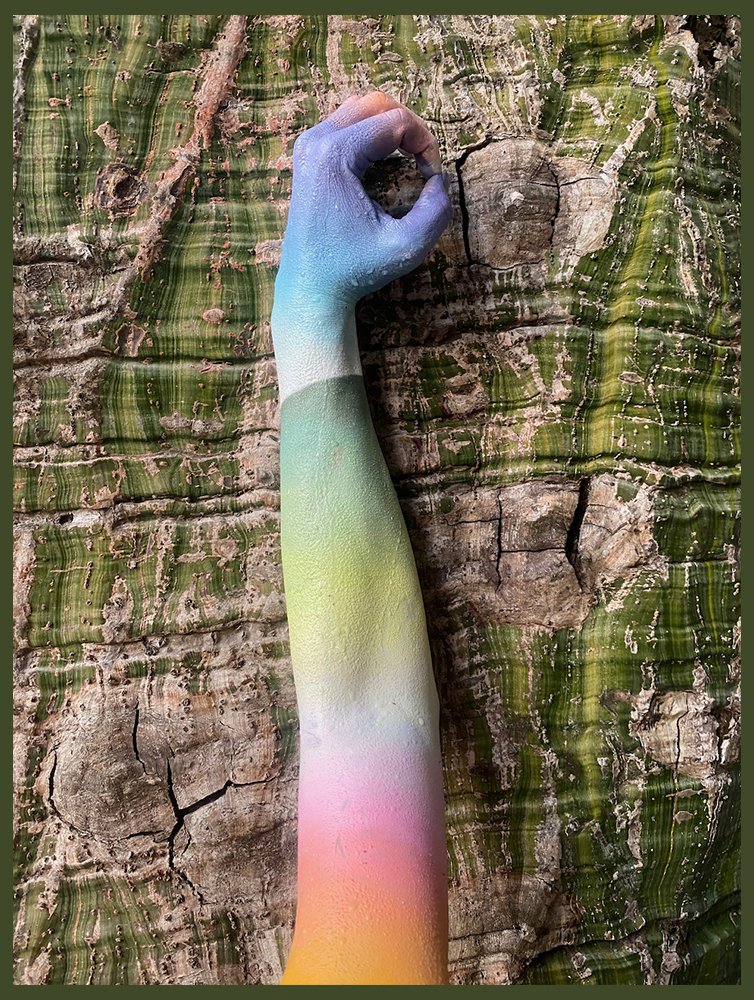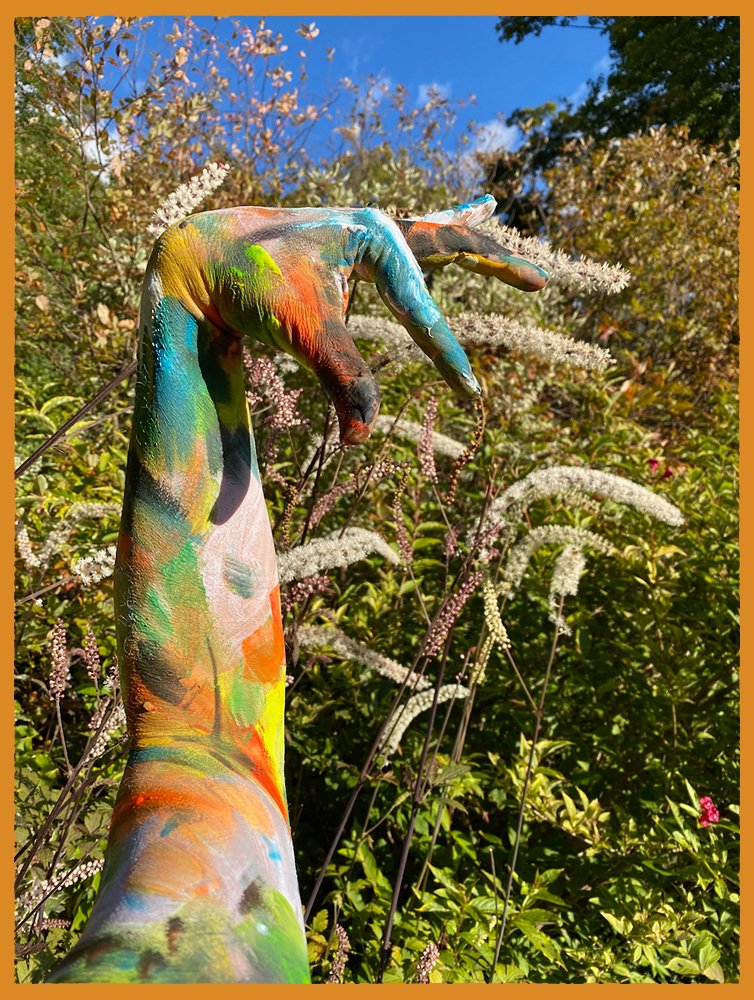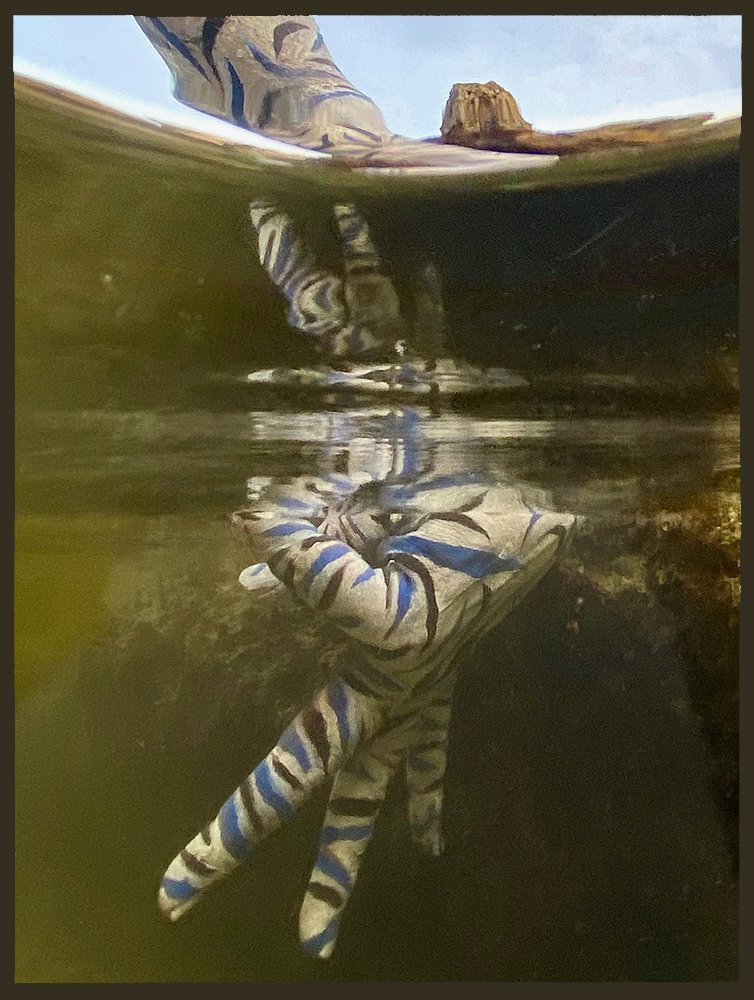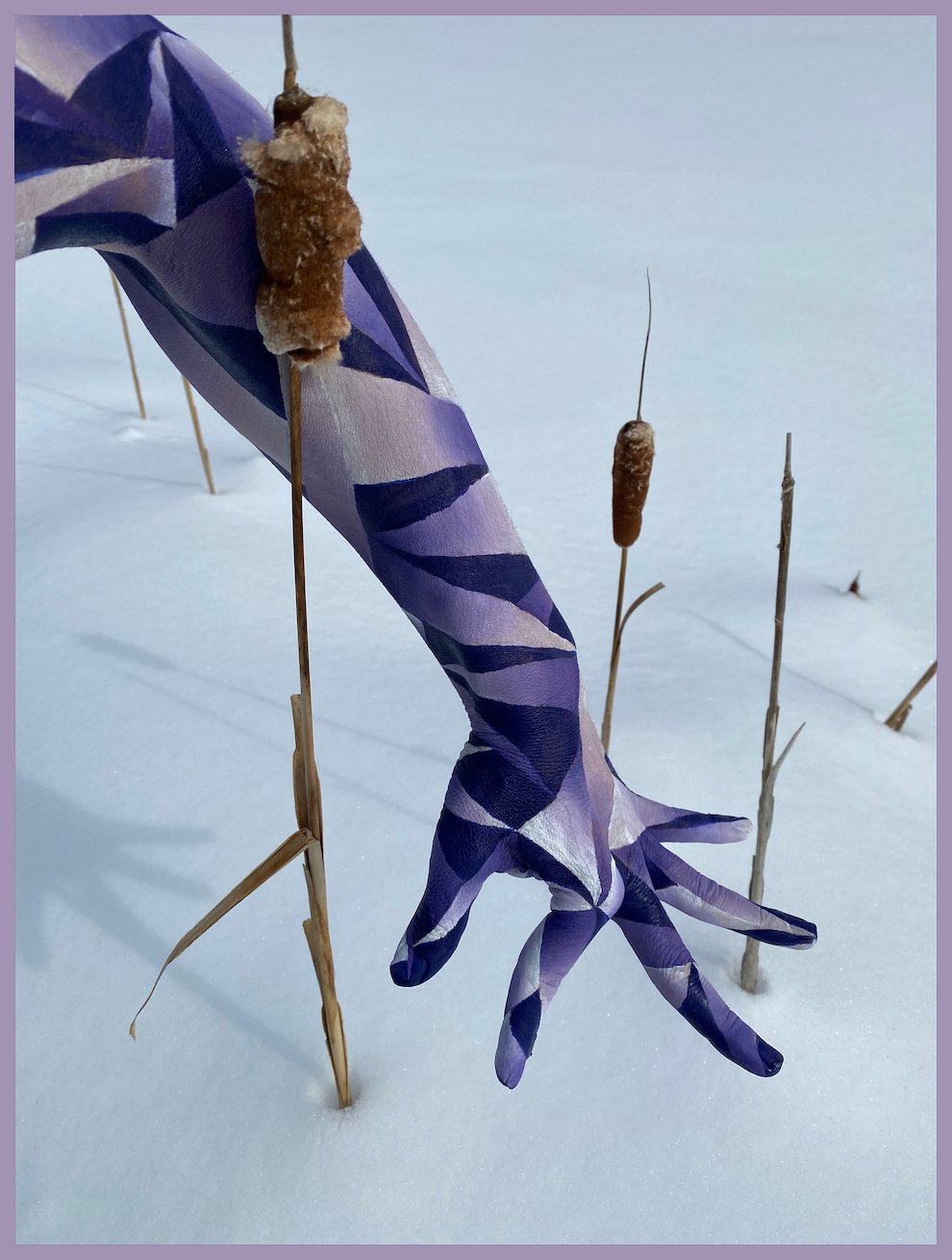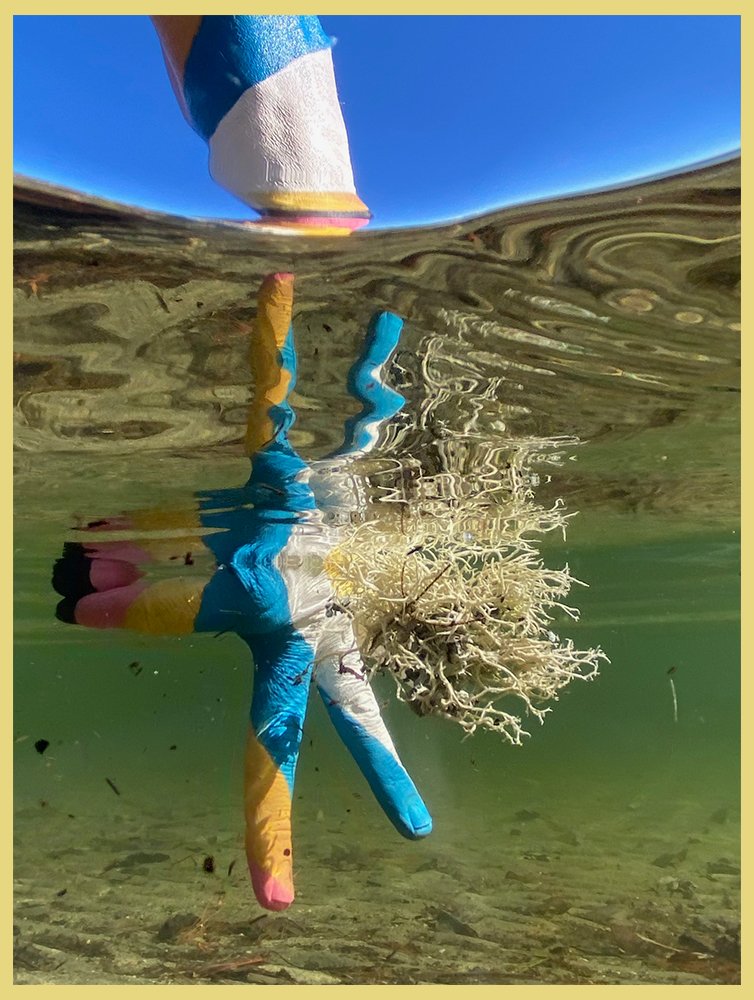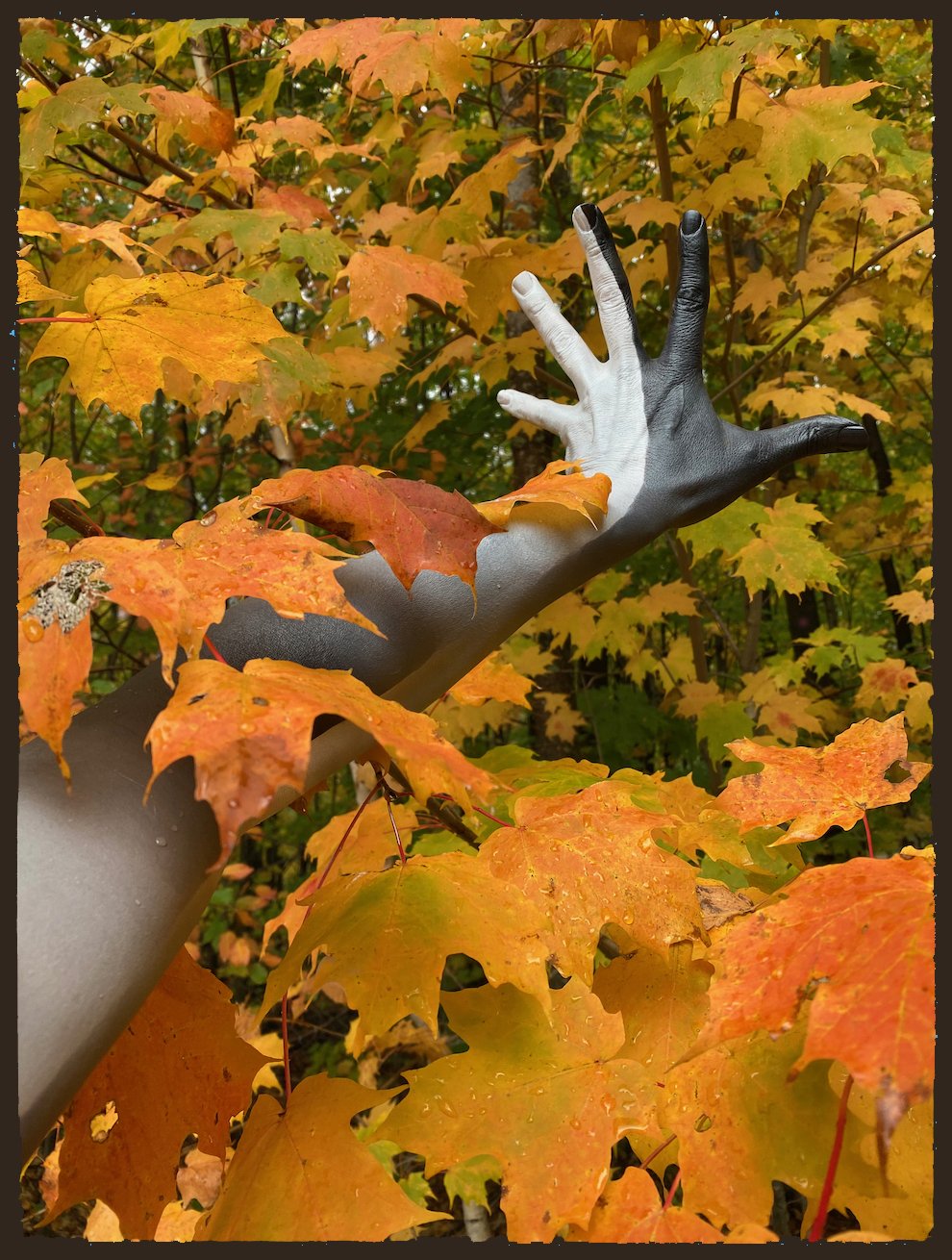Benny Merris: flash!
Benny Merris with Lygia Clark, Jacques-Yves Cousteau, Harold “Doc” Edgerton, Joan Jonas, Yusef A. Lateef, Emilio Pucci Heritage, and Smokehouse Associates
June 16 – August 6th, 2022
Installation Views
Press Release
Heroes Gallery is pleased to present new work by Benny Merris in conversation with Lygia Clark, Jacques-Yves Cousteau, Harold “Doc” Edgerton, Joan Jonas, Yusef A. Lateef, Emilio Pucci Heritage, and Smokehouse Associates. This constellation of artists informs Merris’ ongoing series “An Other Another,” 2012–present.
The title An Other Another uses a poetic device to create a unique echo through the repetition of words whose meanings are similar, but not exact. This chiasmus also takes place in the artworks themselves as Merris paints and then photographs his forearm during exploratory play in varied landscapes. Each painting is unique and exists for the duration of a roving photo session before it is wiped away. During these sessions, Merris walks, crawls, swims, stretches, and arches his body to find moments of reflection and points of connection between the painting on his arm and the environment. The resulting photographs, always taken at an arm’s-length, frame fleeting micro-moments of interaction, juxtaposition, transformation, and camouflage. In this way, each An Other Another is situated between painting and performance documentation.
While Merris’ work is grounded in painting-as-process and in histories of abstraction, An Other Another revels in an ambivalence towards painting-as-object by foregrounding ephemerality and embodied movement. The temporary arm-paintings made in response to each setting underscore the idea that abstraction is embedded in the world around us and Merris’ persistent desire to “work in the service of color” amplifies these environments. While mood and focus changes from one image to the next—ranging from psychedelic and bombastic to murky and strange—the series is consistently exuberant, nuanced, and expansive. Coinciding with ten-years of An Other Another in action, this exhibition places a selection of Merris’ recent works in conversation with his artistic heroes to frame and contextualize key characteristics of the project.
The book Lygia Clark: l’oeuvre à l’événement – Nous sommes le moule. A vous de donner le souffle [Lygia Clark: From work to event – We are the mold. It’s up to you to breathe] explores the artist’s relational experiences from the 1960s in which the viewer sharpens their senses and perception through active participation. For Clark, art became rooted in affective embodiment. In this book, one sees the traces of her exhaustive exploration of geometric abstraction, which led to major shifts in her practice. Merris, who is breathing into the event of painting, is deeply inspired by the bodily and temporal dimension of Clark’s later work.
A lithographic print, Droit de la Mer (1974), made by the explorer, conservationist, and filmmaker Jacques-Yves Cousteau, depicts a man and a dolphin merging into one being. It was produced with the World Federation of United Nations Associations to commemorate the first international Law of the Sea and is a cherished artwork in Merris’ personal collection. It’s little-known that Cousteau first fell in love with the underwater world when he was nine-years old at a summer camp in Vermont. As punishment for refusing to go horseback riding, the young explorer was forced to clean out sunken debris at Harvey’s Lake. While researching Cousteau, Merris learned that years later when the same lake was at risk of being developed, a resourceful conservationist named Bob Linck appealed to Cousteau for assistance. Cousteau replied with characteristic gusto, making a financial pledge that ensured the lake’s preservation. Working with Vermont’s Bradford Public Library, local writers and historians, and the Connecticut River Council, Merris has assembled ephemera that highlights this conservation effort. An Other Another 215, created at Harvey’s Lake, features in the exhibition.
Cousteau maintained a life-long friendship and collaboration with inventor and professor Harold “Doc” Edgerton, whose innovations were vital to the development of sonar and deep-sea photography; their work together reflects a shared passion for making the invisible visible. A generous spirit, Edgerton loved to hand out postcards of his photographs as he traveled the world with Cousteau, three of which are included in the exhibition. The show title flash! is a nod to the title of Edgerton’s first book, published in 1939. It features iconic photographs taken with the stroboscopic equipment and electrical flashes that Edgerton used to reveal incremental movement previously indiscernible to the human eye.
Explorations of perception are prevalent in the groundbreaking work of Joan Jonas, who has called herself an imagist after the early twentieth-century poets. Renowned for a multidisciplinary approach that weaves together the language of filmmaking, poetry, painting, and sculpture, Jonas has been investigating notions of transformation, reflection, and time across artistic forms for decades. Merris has chosen to exhibit Wind, an early performance film created in 1968. This silent, black and white film, originally shot on 16mm, cuts between snowy fields and a Long Island seashore where a group of performers move through an unsheltered landscape interacting with each other in the whipping wind.
Master-musician Yusef A. Lateef, best known for his compositions and autophysiopsychic improvisations, also created visual artworks, graphic notations, and poetry. Known to play his drawings as musical scores, Lateef, a wind instrumentalist, also blew air through a straw to gently move watercolors around on the page. Central to Lateef’s way of working was an emphasis on practice, a belief that continual rehearsal and engagement made improvisation possible. This approach permeates Merris’ “An Other Another” series, allowing him to adapt and respond to the landscape he finds himself in.
Fashion designer Emilio Pucci created patterns of swirling lines and vivid color inspired by bodies in motion. His intense personal experiences with speed and scale—as a fighter pilot and an Olympic ski racer—helped develop the dynamic bird’s eye view that he used in his work. For this exhibition Merris collaborated with Emilio Pucci Heritage, an institution spearheaded by the designer’s daughter Laudomia Pucci, which houses the Pucci estate. Working with their archivist, Merris explored Pucci’s innovative use of synthetic color which the designer once described as akin to picking wildflowers from a field—the more abundant and different the combination, the more beautiful they are.
In a recent interview, artist William T. Williams talks about how abstract painting has purpose and can transform lives. Art collective Smokehouse Associates made geometric mural projects in Harlem from 1968-70, brightening public space and confirming this very sentiment. Williams was one of the four original members of the group, along with Melvin Edwards, Guy Ciarcia and Billy Rose. Together they worked closely with a loose association of poets, musicians, neighbors, and architects (the "Associates” in their name). Seen here in archival photographs, Smokehouse Associate’s environmentally responsive and vibrant murals activated collaborative, social processes by way of abstraction.
Benny Merris is a New York-based artist from Boise, Idaho. He received a BA from University of Massachusetts Boston and MFA from Glasgow School of Art. He was a member of the inaugural Paint School cohort run by Shandaken Projects in New York City. Merris has had solo exhibitions at Cleopatra’s, Brooklyn; Jeff Bailey Gallery, Hudson; Nina Johnson, Miami; Battat Galerie, Montreal; Cokkie Snoei, Rotterdam; Glasgow Project Room, Glasgow; and Kunsthal Rotterdam. Merris has participated in group exhibitions at The American Academy of Arts and Letters, NYC; GRIMM Gallery, NYC; Essex Flowers, NYC; Murray Guy, NYC; Regina Rex, NYC; LAXART, Los Angeles; Contemporary Arts Museum Houston, Houston; Boston University Art Gallery, Boston; and the Walter Phillips Gallery, Banff, Alberta. He has been artist-in-residence at Casa de los Artistas, The Banff Centre, Denniston Hill, and Offshore Residency.
